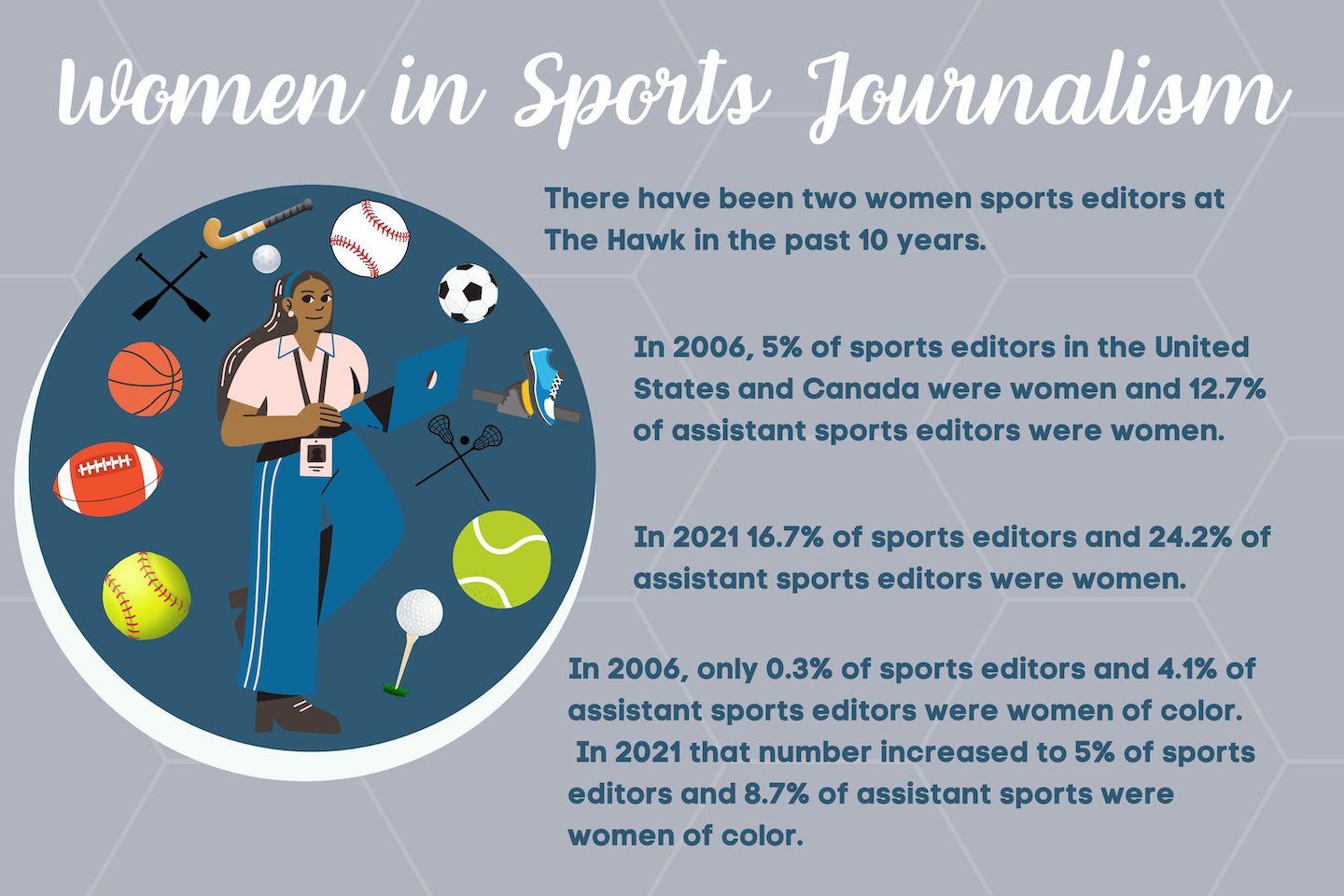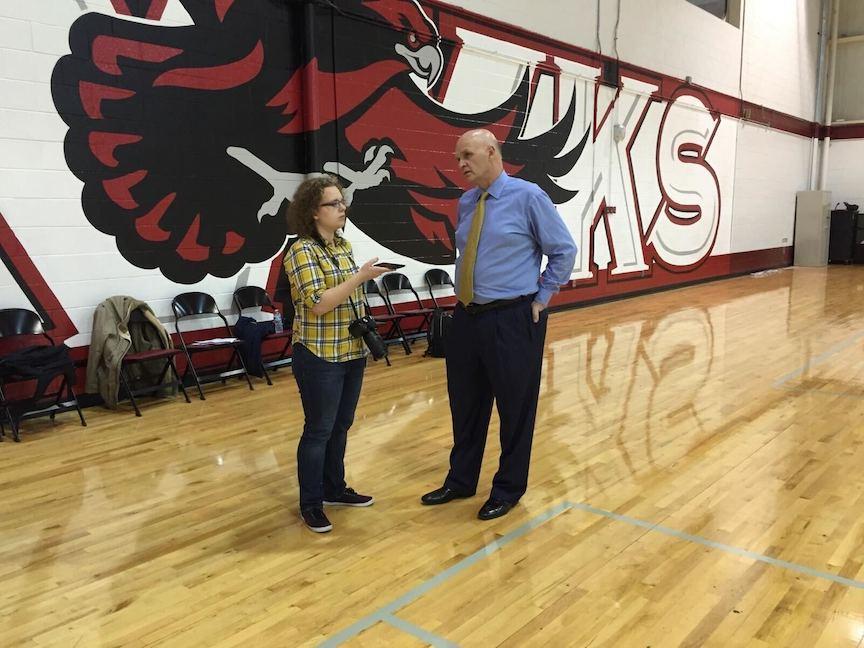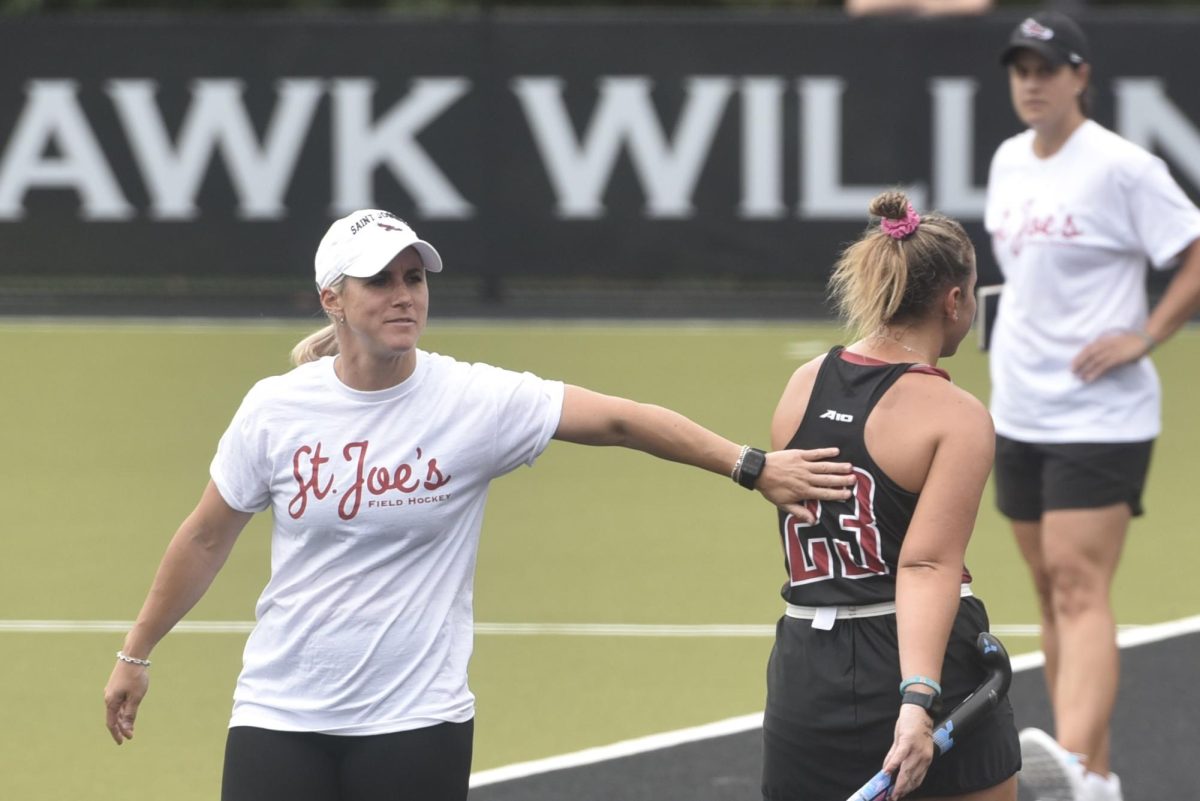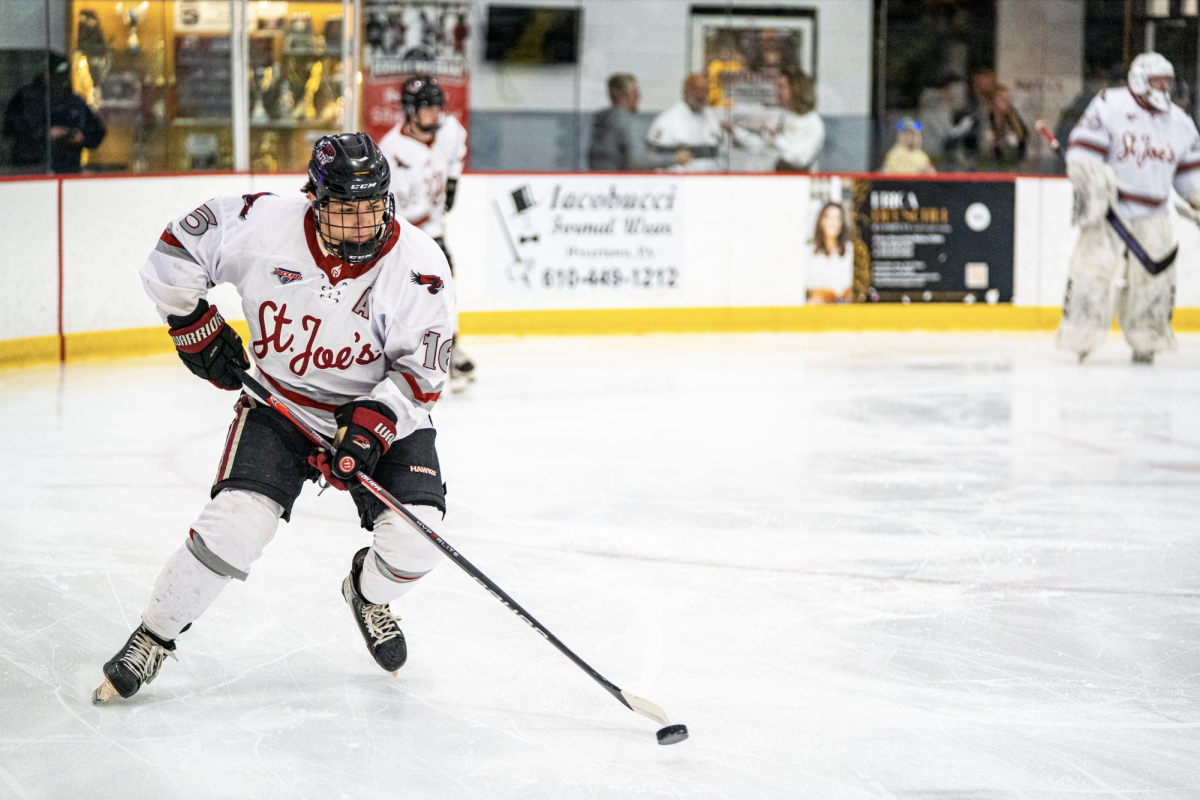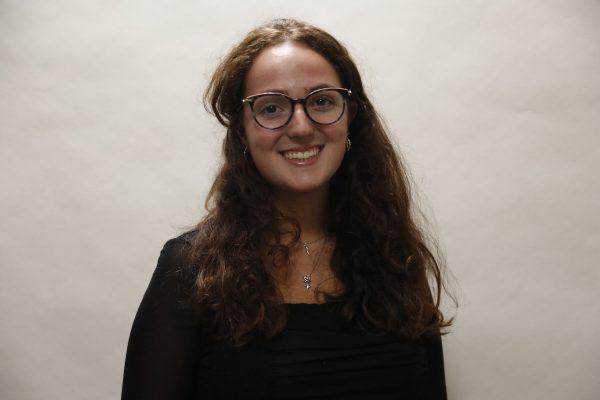When Alex Hargrave ’20 took her spot among other members of the press at her first St. Joe’s men’s basketball game as sports editor of The Hawk, she immediately realized she was the only woman there.
Hargrave, who now works as a reporter at E&E News in Washington D.C., said this was also true in the press room after the game where she had to deal with patronizing remarks from the men around her.
“I worked with a male photographer,” Hargrave said. “They would always defer to him instead of to me.”
The reality is, sports journalism remains a white-male-dominated field, even at college newspapers like The Hawk, and even while more women are interested in pursuing sports journalism as a career.
In 2006, 5% of sports editors in the United States and Canada were women and 12.7% of assistant sports editors were women, according to a report by The Institute for Diversity and Ethics in Sports (TIDES) at the University of Central Florida. The 2021 report showed improvement. In that year, 16.7% of sports editors and 24.2% of assistant sports editors were women.
Diversity statistics show an even greater divide. In 2006, only 0.3% of sports editors and 4.1% of assistant sports editors were women of color. In 2021 that number increased to 5% of sports editors and 8.7% of assistant sports editors.

Established in 1929, The Hawk did not have any women on the staff until 1970 when the university opened its doors to women for the first time. Since then, the position of sports editor for The Hawk has been dominated by male editors, with a handful of exceptions. The first female sports editor for The Hawk was Marisa McLaughlin, who served as editor in the fall of 1977. Other female sports editors over the years include Bitsy Organ ’83, Donna Chesla ’86, Shelley Germana ’01 and Carla Tamagni ’02.
Maureen O’Connell ’95, Ph.D., became assistant sports editor in 1991 during the fall of her first year at St. Joe’s.
Despite mostly women on The Hawk staff at the time, O’Connell was the only woman on the sports desk.
“It felt like a unique opportunity to make a good impression, an opportunity to be able to stand out a little bit,” said O’Connell, who is now a theology professor at La Salle University.
Through her experience at The Hawk and with the help of the sports editor at the time, Bill Avington ’94, O’Connell was able to intern at the sports desk at the Philadelphia Inquirer where she continued to be one of a few women.
“I asked her if she’d be the assistant sports editor because she was good and she knew editing and writing,” said Avington, who is director of communication at St. Joseph’s Preparatory School in Philadelphia. “She was excellent in sports.”
O’Connell said she was never put off by being the only woman in the room.
“Anything that makes people look twice at you and gives you a chance to tell people about who you are, what you’re about and how good you are at something is never a bad thing,” O’Connell said.
In the past 10 years, there have only been two other female sports editors, Hargrave and Christy Selagy ’15 ’17, who is now a senior contributor for The City of Basketball Love, an online publication that covers high school and college basketball in the Philadelphia area.
A sports fan all her life, Selagy said she didn’t see any women in a sports-related position until 2013 when she won a Phillies auction for a public relations intern experience for a day. It was then that Selagy first saw women in the field and felt inspired.
“Not only were there women working for my favorite baseball team, but a woman [Bonnie Clark] was leading a communications department for this MLB team,” Selagy said.
Selagy said during her time as sports editor of The Hawk, she never faced obvious pushback in her position. But Selagy did have to deal with subtle sexism from the men around her.
“Some people seemed to think that I didn’t know what I was doing because I was a woman,” Selagy said. “People expected that it would be a male sports editor.”
Hargrave faced a similar challenge with people assuming she was a man over email.
“My name is Alex, and that’s pretty gender neutral, so people would always assume that I’m a guy,” Hargrave said. “I’d pick up the phone, and I’d have this high-pitched, woman’s voice and they’d be like ‘Oh, my goodness.’”
Brianna Mac Kay ’23, sports editor for The Whit at Rowan University, has also been challenged in her position because of her gender. Mac Kay said she has to work harder to command the respect of the men around her.
“I have to realize that my work is good, and there’s a reason I’m in these positions,” Mac Kay said.
A few years after Selagy, Hargrave took over the position of sports editor for The Hawk in 2018. This was the same year that the university appointed its first female director of Athletics, Jill Bodensteiner, MBA.
“It was one of my favorite stories [to cover],” Hargrave said. “It showed the turning of the tide.”
Esther Lim ’24, a sports editor for the Daily Pennsylvania at the University of Pennsylvania, said she has noticed an increase in the number of women who have joined the Daily Pennyslvanian’s sports department after seeing other women have success.
“There have always been women interested in sports and passionate about sports,” Lim said. “Lowering that barrier to entry is really important.”
For Selagy, it was the opportunity to get involved in sports through The Hawk that allowed her to consider a career in sports journalism.
“I don’t think sports writing would have even been on my radar,” Selagy said. “I feel like the experience I had with The Hawk, getting thrown into the deep end and figuring things out really helped me learn how to fend for myself.”
Self-confidence is essential for any woman interested in the male-dominated world of sports, Mac Kay said. Once a writer is able to achieve confidence in their work, they will begin to see a difference.
“It has nothing to do with our gender,” Mac Kay said. “It has to do with the work you’re able to produce and put out there within the world of sports journalism. Once you get that position, just know you earned it.”
Selagy said university programs, and college newsrooms, need to work to foster connections for women interested in pursuing careers in sports.
“What would be helpful is having more female sports journalism professors or connections with the industry,” Selagy said. “Having that kind of relationship with athletic communications and just trying to be on the same page or a similar page, I think that helps.”
